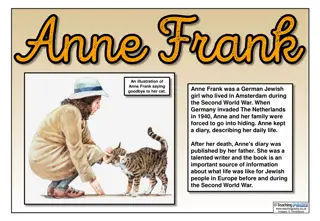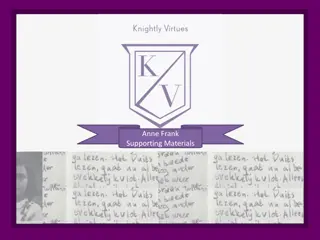The Legacy of Frank and Lillian Gilbreth in Management Studies
Frank and Lillian Gilbreth made significant contributions to time and motion studies, workplace psychology, and management thinking. Frank excelled in efficiency studies, while Lillian focused on industrial psychology. Their innovative approaches and prolific work left a lasting impact on the field of management, earning Lillian the title of "The First Lady of Management."
- Gilbreth legacy
- Time and motion studies
- Workplace psychology
- Management pioneers
- Industrial engineering
Download Presentation

Please find below an Image/Link to download the presentation.
The content on the website is provided AS IS for your information and personal use only. It may not be sold, licensed, or shared on other websites without obtaining consent from the author. Download presentation by click this link. If you encounter any issues during the download, it is possible that the publisher has removed the file from their server.
E N D
Presentation Transcript
Frank Gilbreth and Lillian Gilberth Contribution in Time and Motion Studies and Workplace Pshycology
Frank (1868-1924) and Lillian Gilbreth (1878-1972) brought together two of the main streams of management thinking over the past 100 years. At one hand : They followed work which was pioneered by Frederick W. Taylor At the other hand : They developed the study of workplace psychology
FRANKs Initial Work Frank, who began his working life as a bricklayer, closely observed the ways in which different men performed the task and came to conclusions about the most efficient way. In one case he increased the rate of laying bricks from 1,000 a day to 2,700 a day.
Lillian Evelyn Moller Gilbreth One of the first working female engineers holding a Ph.D. Lillian wrote a thesis on the psychology of management Her first notable publication, Psychology in the Workplace , was published in a journal of the Society of Industrial Engineers.
Cheaper by Dozen They were married to each other. Frank s most of the work was around Time and Motion studies. While, Lillian s work revolved mostly around Industrial Psychology They had 12 children together. Upon inquiring why they have so many number of children ; Frank replied They get cheaper by dozen .
The First Lady of Managment Lillian lived on for another 48 years after Frank's death, continuing to work and give seminars for much of that time. Famously, she travelled to Europe a few days after her husband's death in 1924 to fulfil a speaking engagement in Prague that he had undertaken. She was a redoubtable woman, forging a career in a discipline management in the engineering industry where women were not at the time taken seriously. Often called the first lady of management , she was also the first female member of the American Society of Mechanical Engineers. Lillian Gilbreth was included in the US National Women's Hall of Fame in 1995.
Hand Movement The two subdivided workers' hand movements into 17 different units. Doctors to this day owe a debt to them, since it was Frank who first came up with the idea that surgeons should use a nurse as a caddy to hand them their instruments as and when they were needed. Previously surgeons had searched for and fetched their own instruments while operating.
Time and Motion Gilbreth invented motion study designed to determine the best way to complete a job Frank and Lillian Gilbreth used cameras to look at how body motions were used in the process of completing a job. This helped them to improve the processes and rearrange setups. Time studies were once used to establish performance-based wage rates.
WHAT IS MOTION AND TIME WHAT IS MOTION AND TIME STUDY STUDY? ? Motion Study is designed to determine the best way to complete a repetitive job
Time Study measures how long it takes for an average worker to complete a task at a normal pace
Motion and time study helps management determine how much is produced by workers in a specific period of time, therefore making it easier to predict work schedules and output. Motion and Time Study is a scientific method designed by two different people for the same purpose, to increase productivity and reduce unit cost. The two methods evaluate work and try to find ways to improve processes.
DETAILS OF MOTION AND TIME STUDY DETAILS OF MOTION AND TIME STUDY Motion Study Improve methods It measures distance, or how much you move to do a job, and how much you get done in a period of time Time study Establish standards Looked at the average time it took an average worker























